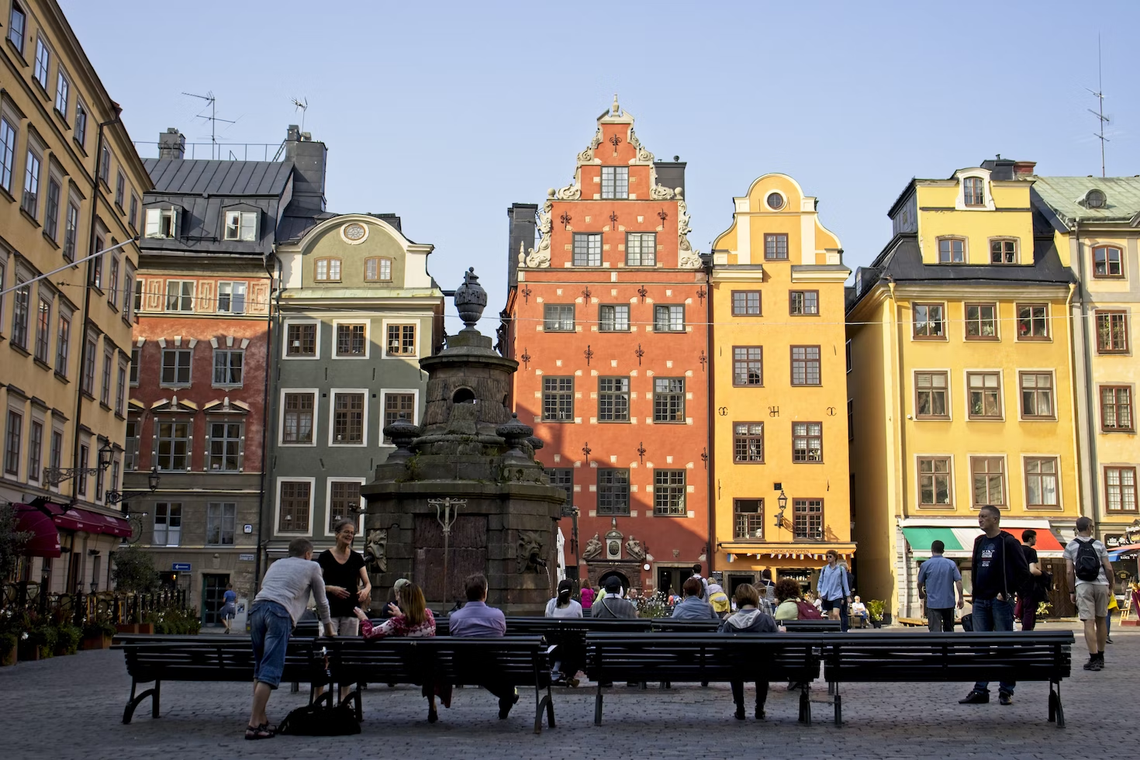Apply to a foreign university with confidence
- Properly fulfilled documents
- Perfect motivation letter
- Support from a personal mentor
- Offers from several universities
Unlike other countries, where students take several subjects at the same time, in Sweden students often study only one subject for several weeks and take an exam at the end of the course. Find more information in the article.
Free consultation




Universities in Sweden started to emerge in the 15th century and since then have produced innovations and inventions. Swedish brands and technology companies such as Spotify, Electrolux, Ericsson, Volvo, IKEA, and Bluetooth continue to shape the world today. A large number of students come here not only for progressive education but also for quality teaching, a liberal atmosphere, and a variety of universities. Sweden is home to the Uppsala University — oldest in all of Scandinavia, several prestigious academies of fine arts, and a dozen universities of technology with a focus on research.
Items 1-6 of 81
Advanced search
| Program | Age | Duration | Min. cost | Avg. cost | Min. language level | Exams |
|---|---|---|---|---|---|---|
| Foundation | 16+ | 1-2 semesters | 15,707 USD/year | 18,848 USD/year | B2 | IELTS 6.0 |
| Bachelor's | 17+ | 3 years | Free | 13,173 USD/year | C1 | IELTS 6.5 / TOEFL 90 |
| Master's | 20+ | 2 years | Free | 15,200 USD/year | C1 | IELTS 6.5 / TOEFL 90 |
| MBA | 20+ | 1 year | 8,228 USD/year | 20,267 USD/year | C1 | IELTS 6.5 / TOEFL 90 |
| Doctoral | 20+ | 3+ years | Free | Free | C1 | IELTS 6.5 |
All prices must be checked on the university websites.
Applications are submitted through universityadmissions.se, where multiple universities and programs can be selected. The decisions of admission committees are also published there. For admission you will need:
The certificate or diplomas must be translated into Swedish or English and notarized.

There are 38 public universities and several private universities in Sweden. Educational institutions in the country are divided into 2 types:
Universities and university colleges differ in the amount of attention dedicated to research. Older universities conduct more extensive research than university colleges and new universities.
The distinction between the two types of institutions is not always clear from the name of the institution, because:
Initially, only two institutions had university status — Uppsala University and Lund University. The rest "grew" out of colleges. The list of all universities can be viewed here or here.
University сollege (Högskola) is a higher education institution, similar to a university, but usually smaller in size. Högskolor, like universities, do research and offer bachelor’s and master’s programs. Unlike research universities, which can award PhD degrees, some högskolor are not allowed to provide doctoral studies. Moreover, the Swedish government has limited the number of scientific areas in which högskola can award PhD degrees. Most university colleges have agreements with major universities to conduct joint doctoral programs.
Higher vocational education is presented by special HVE (Yrkeshögskolan) programs. They are offered at universities and private educational institutions. HVE addresses the urgent needs of the labor market. Here, theoretical studies are combined with on-the-job practice. The duration of HVE is 1-3 years. In total, such programs make up just over 10% of all higher education in Sweden[1]. The admission requirements vary from institution to institution, but it is mandatory to know Swedish and have relevant education. For details, students must contact the educational institution directly.

Sweden has a unified higher education system that follows the same legislation, regardless of the institution in question. The size of higher educational institutions varies greatly. Judging by the number of enrolled students, in the 2018 and 2019 academic years, the largest university (Kungliga Tekniska högskolan) had more than 45,000 students, and the smallest universities had less than 100 registered students[1].
There are 14 public universities and 17 public university colleges in Sweden. They are controlled and funded by the state, but at the same time, they are autonomous in many of their decisions. Additionally, there are a number of independent higher education institutions such as the Stockholm School of Economics, the Chalmers University of Technology, and the Jönköping University Foundation. They are owned by foundations or associations. Private institutions receive the authority to award degrees from the Parliament, and not from the Swedish Ministry of Higher Education like public universities.
Admission requirements are set by the university and individual programs themselves.
The association was created by the education institutions themselves, the initiative came from the rectors. SUHF has no legal status and is not regulated by law, but in practice, it is recognized as a representative of education institutions.
Additionally, Swedish universities are members of other international associations and alliances, for example, European University Association (EUA), Conference of European Schools for Advanced Engineering Education and Research (CESAER), Alliance of Global Sustainability (AGS), Nordic Five Tech (N5T), Scholars at risk (SAR), SGroup European Universities' Network and Eutopia.

Until 2011, universities in Sweden were free for everyone, but now only for citizens of the EU/EEA and Switzerland. PhD programs are still free for all students, regardless of citizenship, while bachelor's and master's programs cost about 14,187 USD per year on average. However, universities and the Swedish government offer generous grants to local and foreign applicants.
60+ countries
we work with
$1,000,000 saved
by students through scholarships
6,400 offers
our students got